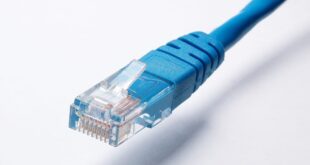Protecting Your Computer: 10 Ways to Detect and Prevent Intrusions
Introduction
Computers have become an integral part of our lives, but with ease of use comes the constant danger of **intrusions**. In this day and age, preventing computer intrusions is an absolute necessity. While the prospect of intrusions may be daunting, the good news is that it is possible to protect your computer and detect intrusions before they cause harm. Here are **10 ways to detect and prevent intrusions**:
1. Install a Firewall
Firewalls protect your device’s network from unauthorized access. Install a firewall and only allow network traffic to your device and server from known sources.
2. Update Your Software Regularly
Programmers are constantly working to find and fix vulnerabilities in their products. Update your device software, so it can be up-to-date in terms of viruses, risks and solve security vulnerabilities.
3. Use Complex Passwords and Change Them Regularly
Use strong passwords with numbers and symbols to adequately protect your data. Don’t repeat passwords for multiple websites. Prevent social engineering attacks by securing and changing new passwords regularly.
4. Always Log Out and Lock Your Device
Failing to log out of your device leaves your information exposed should an intrusion occur. Whenever your situation requires leaving your device without removal, lock the screen to fend off casual intrusions.
5. Enable Two-Factor Authentication
Two-factor authentication gives you an extra level of security, adding a second step to the login process. For example, it could be when you request a text message or code through an email notification before you can access any portal you want on a device.
6. Be Aware of New Software or Website Scams
The golden rule is to be mindful of getting carried away when downloading free online software or starting a job online. Risks can come in fake scams online that seem authentic, so don’t forget to always look into it.
7. Clear Old Unment Cached Files
Get rid of unnecessary cache data that can put the information and networks of your machine in danger. Remove files, temporary files, bookmarks, pictures, and anything relevant on any system that you’re not sure about using again.
8. Disable auto-boot from Peripherals or USB drive
Ensure the use of automatic login for sensitive records, so you can stop hacking. Users are counseled even to arrest functionality that automatically starts with an attacking device when triggered.
9. Create Backups of your Data Regularly
Knowing secure backup systems allow you to obtain your documents in a prompt method in data breach change cases. There are multiple cloud start options as well as locally saved data that you can leverage at any time.
10. Conduct Regular Health Scans
Make frequent use of antivirus devices and detect any warning lights that highlight unpleasant transactions, poor communications, and security issues. Once you identify them, remove them from your device without delays.
Conclusion
Intrusions are potential hazards, but it doesn’t imply that they risk harming you completely. Following these suggested suggestions for preventing and intruder hazards of this time limits actual downtime and leads to an increased degree of safety for your computer as well ensuring the safety of your details, programs, and networks.
 Mind Uncharted Explore. Discover. Learn.
Mind Uncharted Explore. Discover. Learn.



